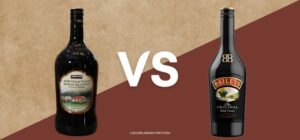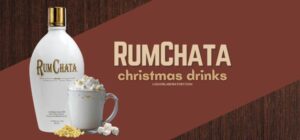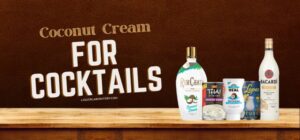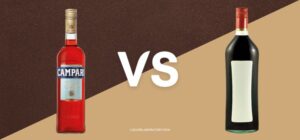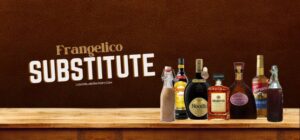Last Updated on March 17, 2024 by Lydia Martin
Whole Foods is one of the largest chains of supermarkets in America, and its broad and decent wine selection can be overwhelming at times.
Skip the hassle and avoid hit-and-miss with their wines, as we will reveal the best wine at Whole Foods that will surely impress everyone. Keep reading.
Table of Contents
ToggleTop 15 Best Wines To Grab At Whole Foods
15. Field Recordings Neverland Cabernet Sauvignon

Average Price: Roughly $21.99 per 750ml (Drizly)
Alcohol Content: 13.9%
Why We Like It: The Neverland Cabernet Sauvignon is a delectable dinner table wine crafted from the finest Cabernet Sauvignon [1].
It is packed with rich cherry, black pepper, oak, blueberry, tobacco, and plum with a silky mouthfeel finish. It makes an excellent pairing to red meats, chocolates, and desserts. But what’s our recommended Cabernet Sauvignon below $25?
14. Green & Red Chiles Canyon Vineyards Zinfandel 2016

Average Price: Roughly $29 per 750ml (Drink Dispatch)
Alcohol Content: 14.8%
Why We Like It: Green & Red Chiles Canyon Vineyards Zinfandel 2016 bursts with plum, cherry, and blueberry flavors with candied fruitiness.
As it aged in oak barrels for 14 months, it developed its character and flavor profile [2]. It has a nice balance of spice and smoke, and the crisp acidity makes the wine more lively.
13. De Chanceny Crémant de Loire Brut N.V.
Average Price: Roughly $14.29 per 750ml (Drizly)
Alcohol Content: 12.5%
Why We Like It:
If you are looking for champagne without the hefty price tag, you can snag a bottle of De Chanceny Crémant de Loire Brut N.V. from Whole Foods.
The brut is light-bodied, dry, and citrusy, with fine bubbles and a crisp apple finish. It pairs well with seafood and roasted vegetables, and its creamy undertone makes it suitable for party foods.
Read: Our Favorite Cheap Wines Under $5
12. Madame Liberte Sparkling Rosé
Average Price: Roughly $17.5 per 750ml (Mr. D Wine Merchant)
Alcohol Content: 12.5%
Why We Like It: Madame Liberte Sparkling Rose has many red fruit aromas and bubbles with rich watermelon, red apple, and strawberry tasting notes.
It can be your go-to- cheap sparkling rose from Whole Foods and is considered one of the best wines. The minerality shines, giving a tarty and savory taste.
11. Dancing Crow Vineyards Sauvignon Blanc 2018
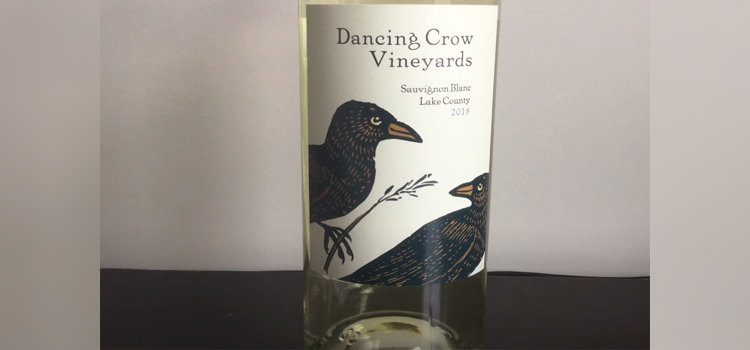
Average Price: Roughly $16.99 per 750ml (Drizly)
Alcohol Content: 12.5%
Why We Like It: Dancing Crow Vineyards Sauvignon Blanc 2018 is an excellent steal for its fruity profile and good acidity.
It refreshes the palate and brings a fantastic aroma and taste of lemon peel, lemon grass, crisp green apple, white peach, and a hint of grass.
Check out our recommended Sauvignon Blanc wines for under $30.
10. Santa Julia Malbec

Average Price: Roughly $11.99 per 750ml (Drizly)
Alcohol Content: 14%
Why We Like It: Santa Julia Malbec is smooth and approachable, filled with subtle oak aging. It emphasizes the black cherry, spice, and damson flavors that pair well with oriental dishes.
It offers a complex nose of ripe fruits, raisins, and figs. It has a good body with balanced acidity, tannins, and a complex finish.
9. Decoy Brut Cuvée N.V.

Average Price: Roughly $22.99 per 750ml (Drizly)
Alcohol Content: 13.5%
Why We Like It: Decoy Brut Cuvée N.V. is an enticing, sparkling wine packed with alluring layers of white peach, orange zest, baked apple, vanilla, and honeysuckle.
On the nose and palate, it has a delicate sweetness, spot-on acidity, and gorgeous fruit flavors that will make you want another glass.
8. Frey Biodynamic Field Blend
Average Price: Roughly $16.99 per 750ml (Drizly)
Alcohol Content: 13.9%
Why We Like It: If you are looking for the best organic wines at Whole Foods, Frey Biodynamic Field Blend will not disappoint you.
It features a medium-full body packed with apple, licorice, candied fruits, and caramel flavors.
7. Inama Soave Classico 2018

Average Price: Roughly $15.99 per 750ml (Drizly)
Alcohol Content: 12.5%
Why We Like It: Inama Soave Classico brings zesty and flowery notes to the table. It refreshes our palate with orange zest, melon, peach, honey, and marjoram flavors.
The wine lends a savory and crisp flavor profile with a delicate and refined sweet almonds aftertaste.
6. La Marca Prosecco

Average Price: Roughly $17.99 per 750ml (La Marca Official Website)
Alcohol Content: 11%
Why We Like It: Many easily fall in love with La Marca Prosecco because of its lively bubbles and citrusy notes that give out a real treat.
The Prosecco has a nice balance of minerality, fruitiness, and sweetness. Ripe pear, lemon, grapefruit, and white flower are evident in every sip.
5. Union Sacre Elsass Dry Riesling
Average Price: Roughly $15 per 750ml (Highland Park Wine)
Alcohol Content: 12.4%
Why We Like It: Union Sacre Elsass Dry Riesling boasts lime, peach, apple, pineapple, and Meyer lemon flavors. It is a crowd-pleaser with its tasting notes and affordability.
It is an enjoyable and delectable white wine with lashings of tangerine and green apple with fresh floral undertones.
4. Bonterra Chardonnay
Average Price: Roughly $14 per 750ml (Bonterra Official Website)
Alcohol Content: 13.5%
Why We Like It: Bonterra Chardonnay is widely accepted by many because of its rich characteristics of pears, green apples, and cirrus.
70% of the juice is fermented in oak for a creamy and rich wine, while the 30% remaining is fermented in stainless steel for crisp fresh fruit flavors.
“Wine is a living breathing beverage… room temperature is fine”
– Paul Grieco, Wine Expert
3. Chacewater Petite Sirah
Average Price: Roughly $20.99 per 750ml (Drizly)
Alcohol Content: 12%
Why We Like It: If you are fond of the dense mouthfeel and full body of Petite Sirah, Chacewater Petite Sirah can be a great choice.
It is rich in smokey dark berried fruits, plums, licorice, and pepper. In addition, it is slightly dry with a smooth mouthfeel.
2. Biokult Rosé Secco
Average Price: Roughly $18.99 per 750ml
Alcohol Content: 11%
Why We Like It: Biokult Rosé Secco is a vibrant tipple with a light body and fruity-tasting notes. It pops lime zest, fresh flowers, cherry, raspberry, and blossom, pleasing the nose and palate.
A creamy undertone and mineral dryness will make you come back for more.
1. Birichino Besson Vineyard Old Vines Grenache 2018
Average Price: Roughly $43.24 per 750ml (Philglas & Swiggot)
Alcohol Content: 13.5%
Why We Like It:
Birichino Besson Vineyard Old Vines Grenache 2018 is one of the finest wines from Whole Foods, and it explodes in notes of pomegranate, strawberry, and anise with a supple mouthfeel.
It is silky-smooth, bringing earthy aromas and a palate profile with a lighter finish. Stick it in the ice for 20 minutes to taste more expensive [3].
Frequently Asked Questions (FAQs)
What is the best brand of wine to drink?
Determining the best brand of wine to drink is subjective and varies based on personal taste preferences. Some popular brands known for their quality and consistency include Bordeaux from France, Napa Valley wines from California, Barolo from Italy, and Rioja from Spain.
However, the “best” brand ultimately depends on individual flavor preferences, budget, occasion, and the specific wine style desired. It’s recommended to explore different brands, varietals, and regions to find what suits your palate best.
Wine tasting events, recommendations from sommeliers, and online reviews can also help in discovering new brands and expanding your wine-drinking experience.
What is the best wine to use in food?
Choosing the best wine to use in cooking largely depends on the dish being prepared and personal flavor preferences. Generally, dry white wines like Sauvignon Blanc, Chardonnay, or Pinot Grigio are versatile options for cooking seafood, chicken, and light sauces.
For heartier dishes such as red meat or rich sauces, full-bodied red wines like Cabernet Sauvignon, Merlot, or Shiraz can add depth and complexity.
Additionally, specific cuisines may pair better with certain wines; for example, Italian dishes often call for Chianti or Sangiovese, while French cuisine may benefit from Burgundy or Bordeaux wines.
It’s essential to avoid using cooking wines with added salt or low-quality wines, as they can adversely affect the flavor of the dish.
Ultimately, the best wine to use in food is one that complements the flavors of the dish without overpowering them, so experimentation and tasting are key.
What is the world’s best-rated wine?
Pinpointing the world’s best-rated wine is challenging due to the subjective nature of wine appreciation and the constant evolution of tastes and preferences. Several renowned wine critics and publications, such as Wine Spectator, Wine Enthusiast, and Robert Parker’s Wine Advocate, regularly review and rate wines based on various factors like taste, aroma, complexity, and aging potential.
Additionally, wine competitions like the Decanter World Wine Awards and International Wine Challenge recognize exceptional wines from around the globe.
While certain wines may receive widespread acclaim and high ratings, such as Bordeaux’s Château Lafite Rothschild or Burgundy’s Domaine de la Romanée-Conti, the title of “world’s best-rated wine” often shifts over time as new vintages and discoveries emerge.
Ultimately, the perception of the “best” wine is subjective and can vary greatly among individuals based on personal preferences and experiences.
What is the nicest tasting wine?
Determining the “nicest tasting” wine is highly subjective and can vary significantly depending on individual preferences.
Some people may prefer the fruity notes of a New World Shiraz or the crispness of a Sauvignon Blanc, while others may enjoy the complexity of an aged Bordeaux or the elegance of a Pinot Noir.
Factors such as grape variety, region, winemaking techniques, and personal taste preferences all contribute to what someone may consider the “nicest tasting” wine.
Exploring different styles, varietals, and regions through wine tasting experiences can help individuals discover wines that align with their palate and preferences.
Which is the most popular wine?
The most popular wine can vary depending on factors such as geography, cultural preferences, and trends. However, some wines have achieved widespread popularity and recognition globally.
For example, Chardonnay and Cabernet Sauvignon are among the most widely planted grape varieties worldwide and are commonly enjoyed by wine drinkers around the globe.
Additionally, Champagne, known for its association with celebrations and special occasions, remains a popular choice for sparkling wine enthusiasts.
In terms of specific brands or regions, wines from regions like Bordeaux, Burgundy, Napa Valley, and Tuscany often enjoy high popularity due to their reputation for producing quality wines. Ultimately, the most popular wine can vary depending on the context and preferences of the consumers.
What is the smoothest red wine to drink?
The term “smooth” in wine typically refers to a wine’s texture, specifically describing a wine that feels soft, velvety, or well-integrated on the palate, with balanced tannins and acidity.
Several red wine varietals and styles are known for their smooth characteristics. For example, Merlot is often praised for its smooth texture, with ripe fruit flavors and supple tannins. Pinot Noir, particularly from regions like Burgundy or Oregon, is celebrated for its silky texture and delicate flavors.
Additionally, certain red blends, such as those from Bordeaux or Super Tuscan wines, can exhibit smoothness due to the careful blending of grape varieties.
Ultimately, the smoothest red wine to drink depends on individual taste preferences and the specific characteristics sought, but exploring wines labeled as “smooth” or asking for recommendations from knowledgeable wine professionals can help in finding the perfect bottle.
What is the healthiest wine to drink?
When considering the healthiest wine to drink, moderation is key. Red wine, in particular, has garnered attention for potential health benefits due to its antioxidant content, specifically resveratrol, which is found in grape skins.
Moderate consumption of red wine has been associated with reduced risk of heart disease and certain cancers, as well as potential benefits for cognitive function.
However, it’s important to note that excessive alcohol consumption can have adverse health effects, outweighing any potential benefits.
When choosing a wine, opt for those made with organic grapes and minimal additives, as these may offer additional health benefits. Ultimately, the healthiest wine is one that is enjoyed in moderation as part of a balanced lifestyle.
What is the most expensive wine?
The title of the most expensive wine can vary depending on factors such as the vintage, producer, rarity, and market demand. Historically, certain wines from renowned estates in regions like Bordeaux, Burgundy, and Napa Valley have commanded astronomical prices at auctions and specialty wine shops.
For example, bottles from Domaine de la Romanée-Conti in Burgundy and Château Lafite Rothschild in Bordeaux have fetched prices in the tens of thousands of dollars per bottle.
Additionally, limited-production or exceptionally aged wines can also demand high prices due to their rarity and prestige.
However, the most expensive wine is subjective and can change over time as new vintages enter the market and collector demand shifts.
Which brand is best in red wine?
Determining the best brand in red wine is subjective and can vary based on individual preferences, budget, and specific wine styles desired. Several brands are renowned for their consistent quality and reputation for producing exceptional red wines.
For example, in Bordeaux, Château Margaux, Château Latour, and Château Haut-Brion are esteemed producers known for their high-quality wines. In Napa Valley, Opus One, Screaming Eagle, and Harlan Estate are recognized for crafting premium red wines.
Additionally, regions like Tuscany in Italy boast esteemed brands such as Antinori and Sassicaia, known for their world-class Super Tuscan wines.
Ultimately, the best brand in red wine is a matter of personal preference, and exploring different producers, regions, and vintages can lead to discovering new favorites.
What is the No 1 most expensive wine in the world?
The title of the most expensive wine in the world can fluctuate due to various factors such as rarity, provenance, and market demand. Historically, certain wines from renowned estates have fetched extraordinary prices at auctions and private sales.
One example is a bottle of Château Lafite Rothschild 1787, which holds the record for one of the most expensive wines ever sold. This particular bottle, with the initials “Th.J.” engraved on it, was purportedly owned by Thomas Jefferson, the third President of the United States.
It sold at auction for over $156,000 in 1985. However, the most expensive wine can change over time as new auctions take place and collector demand shifts.
What is the number 1 red wine in the world?
Determining the number one red wine in the world is subjective and can vary depending on factors such as personal taste preferences, critical acclaim, and market trends. Several red wines consistently receive high praise from critics and enthusiasts alike.
For instance, wines from renowned regions such as Bordeaux, Burgundy, and Napa Valley often garner significant attention for their quality and complexity.
Examples include Château Margaux from Bordeaux, Domaine de la Romanée-Conti from Burgundy, and Opus One from Napa Valley.
However, the perception of the number one red wine can differ among individuals based on their experiences and preferences.
Is Merlot a good wine?
Merlot is a widely enjoyed red wine known for its softness, fruitiness, and versatility. It is made from the Merlot grape variety, which typically produces wines with medium to full body and flavors of plum, cherry, and sometimes herbal notes.
Merlot is often praised for its approachability, making it an excellent choice for those new to red wine or seeking a smooth and easy-drinking option. Additionally, Merlot is commonly used in red wine blends, where it can contribute softness and roundness to the final wine.
While Merlot may not have the same prestige as some other red wine varieties like Cabernet Sauvignon or Pinot Noir, it remains a popular choice among wine enthusiasts for its pleasant flavors and food-friendly nature.
Ultimately, whether Merlot is considered a good wine depends on individual taste preferences and the specific characteristics desired in a wine.
Final Words for Best Wine At Whole Foods
Whole Foods can give a fun shopping experience, and now that you know what the best wine at Whole Foods is, the extensive selection will no longer intimidate you.
Bottles of Biokult Rosé Secco, Chacewater Petite Sirah, and Bonterra Chardonnay offer great tasting notes, prices, and ratings.
However, if you want the best wine at Whole Foods, snag a bottle of Birichino Besson Vineyard Old Vines Grenache 2018.
The wine [4] is smooth, delicate, rich in tasting notes, and will make you want another glass.
References:
- Cabernet Sauvignon: Everything You Need to Know
- The Effects of Aging on Liquor
- How to sound like a wine expert
- Wine











